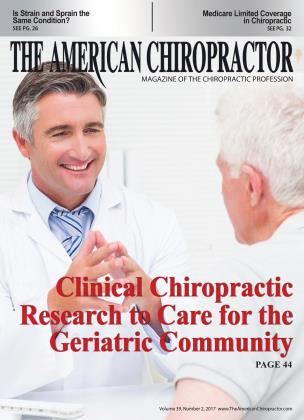Flying Through Heaven, We Brought Someone Back!
PERSPECTIVE
Alan Creed
Iwas highly excited to attend my dear Aunt Shirlee’s surprise ninetieth birthday party. "My Aunt Shirlee donated one of her kidneys to her husband; she is always a positive inspiration in my life and a devoted fundraiser for the Linda Creed Breast Foundation."
On the way back to Miami, 45 minutes into American Airlines flight 2562 on July 17, 2016, a flight attendant announced on the PA system, “Is there a doctor on board?” There was no response and the next moment with a very loud voice, “Is there a doctor on the plane?” At that point, I stood up and asked her, “Where is the patient?”
I was directed to a woman sitting by the window with her eyes rolled back and completely dilated; there was no respiration or heartbeat.
I immediately attended this woman since she was still in her seat. I performed a precordial thump with no response, then another precordial thump, and on the third hit, there was a heartbeat. At that point, I also was administering oxygen. Her chest started to move, she had respiration, and she then began to breathe on her own.
The combination of DU 26 and RN 1 are used for an unconscious individual. Her eyes started to come straight into their sockets, and she became more aware while hying to focus. No facial expression, yet, but I was still with her and holding her.
All this time, I was speaking to her, saying, “Come on, come on, hello, hello,” nicely encouraging her as I continued to press the acupuncture points.
The pilot asked whether we should land or keep going. I asked them to keep flying to Miami since it was easier to go to our airport where they were expecting the plane.
After about six to seven minutes, she stayed in the same condition and nothing really changed. She was breathing on her own, her heart was beating, but she was not focusing or cognitively conscious. At that point, I palpated her neck; the entire right side of her neck was completely jammed. I did a diversified move and adjusted the entire cervical region. She took a huge breath, looked at me, and started to focus and become aware that someone was sitting on top of her, but she still was unable to speak. I stimulated two points on her neck and smiled. Fifteen minutes had passed and she began asking what happened as she became conscious
^Her eyes started to come straight into their sockets, and she became more aware while trying to focus. J J
of her unique situation. After she became aware of the situation, she apologized profusely. “I am so sorry. I am so sorry.” I had to then assuage her concerns so she would remain relaxed and let her know that everything was okay.
Within four minutes, she started to go into shock, at which time she was covered with a blanket and given ginger ale and then warm tea. The awareness started to balance out, and after
another 10 minutes, she wanted to urinate. I helped her stand up and took her to the bathroom, making sure the door stayed unlocked and partially ajar.
Then I escorted her back to the seat and dealt with her shock condition and kept her hydrated, nibbed her, and listened to her. When the airplane landed, the flight attendant had everyone remain seated until she got off the plane. I reported to the EMTs what had occurred and went on my way.
The history of this woman is that she was a 64-year-old who traveled from Greece to Florida and had not eaten properly in a day or so. She was also involved in many delayed flights. As I left the airport, many of the passengers who were privy to the situation thanked me and shook my hand. This woman ambulated on her own off the plane after landing.
I worked through college teaching CPR on a government project to see if CPR could be taught to the masses. I personally taught CPR to more than 2,000 people in my tune. Eveiything that I did was learned through training and practice, over many years of chiropractic, acupuncture, and CPR training.
Throughout this entire endeavor, the flight attendants were absolutely attentive to all of the needs that were required. Their help was definitely a significant contribution to the positive outcome.
What made this work was the application of precordial thump,
acupuncture points, chiropractic adjustments, and constant attention to the patient to address this woman’s shock condition and her needs. The flight attendants’ support for all the required needs was important too. We as chiropractors possess the training and ability to maintain and, in some cases, bring someone back to a more functional nervous system.
References:
1. Creed, Alan M., DC, Creed Neural Kinetic Integration Technique, 2001. Print.
2. Deadman, Peter, Mazin Al-Khafaji, and Kevin Baker. ”DU-26 ” A Manual of Acupuncture. Hove, East Sussex, England: Journal of Chinese Medicine Publications, 2007. 559. Print.
3. Deadman, Peter, Mazin Al-Khafaji, and Kevin Baker. “REN-1. "A Manual of Acupuncture. Hove, East Sussex, England: Journal of Chinese Medicine Publications, 2007. 497-98. Print.
4. Maciocia, Giovanni. “REN 1.” The Foundation of Chinese Medicine: A Comprehensive Text. S.I.: Elsevier, 2005. 1072.
5. Maciocia, Giovanni. “DU-26. ” The Foundation of Chinese Medicine: A Comprehensive Text. S.I.: Elsevier, 2005.1099. Print.
Dr. Alan Creed is a practicing chiropractic physician and certified in acupuncture. Dr. Creed is a postgraduate professor of spinal biomechanics and neurophysiology, and a well-known authority on integrating instrument adjusting in the chiropractic practice—ArthroStim, VibraCussor, drop table, SOT blocks, and spinal decompression. Dr. Creed is the innovator of the Neuro Kinetic Integration Technique and
is an internationally known author, lecturer, and mentor of training manuals and videos for doctors. You may contact Dr. Alan Creed via email drcreedayarthlink. net
 View Full Issue
View Full Issue






